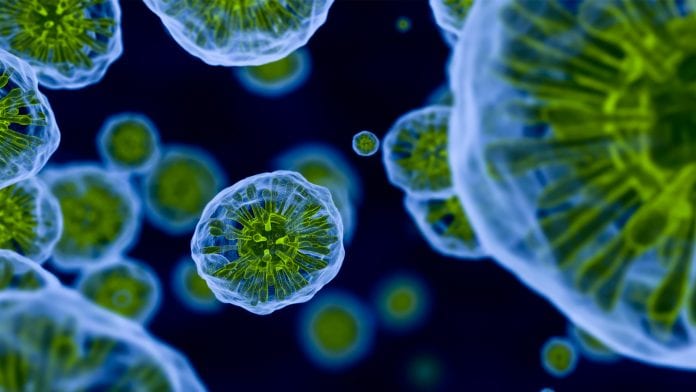
Could carriers of HIV become infection free? Discover how Professor Ravi Gupta of University College London and the University of Cambridge, UK, presented a potential way of curing HIV.
Ground-breaking research on the ‘London patient’ and the ‘Düsseldorf patient’ was presented at the Conference on Retroviruses and Opportunistic Infections, in Washington, USA, 4-7 March 2019, and published in Nature. Here, scientists demonstrated how curing HIV may be a concept that is fast approaching us.
How exactly was curing HIV done?
So far, only one person in the world, Timothy Ray Brown, known in 2008 as the ‘Berlin patient’, has been cured of HIV. Although Brown had traces of HIV, the virus never rebounded, and he is now celebrating 12 years of being cured of HIV.
The transplanted donor cells had a gene defect [CCR5delta32mutant] which results in the absence of one of the critical entry gatekeepers that HIV generally needs to infect cells.
Transplanted cells from a CCR5delta32 donor most likely protected Brown’s immune system. He also received aggressive chemotherapy, total body irradiation, and two stem cell transplants. For over a decade, the HIV field has puzzled over which of these factors were essential for his cure.
The longest adult HIV remission
Professor Ravi Gupta of University College London and the University of Cambridge presented a potential cure of HIV after stem cell transplantation in his ‘London patient’, while Dr. Björn Jensen from Düsseldorf University found his ‘Düsseldorf patient’ similarly potentially cured.
The London patient has not experienced HIV rebound during the 18 months since he stopped taking his antiviral medication. This is the longest adult HIV remission after stem cell transplantation since the Berlin patient.
The Düsseldorf patient stopped his HIV medication for a shorter period of just three-and-a-half months but has also remains HIV free. Using the most sensitive techniques available to date, only traces of HIV DNA were detected.
Curing HIV may actually be achieved
The London and Düsseldorf patients show that after a single transplant and with even mild cancer chemotherapy and without radiation, remission may be achieved.
Both the London patient and the Düsseldorf patient were registered with the IciStem programme. IciStem is the International Collaboration to guide and investigate the potential for HIV cure by Stem Cell Transplantation.
Two IciStem scientific investigators in the London patient and Düsseldorf patient cases are also honorary full professors at the University of the Witwatersrand, Johannesburg (Wits), South Africa.
Annemarie Wensing is an Honorary Full Professor at the Wits Reproductive Health and HIV Institute (Wits RHI) and Professor Monique Nijhuis is an Honorary Full Professor in the HIV Pathogenesis Research Unit (HPRU) in the Faculty of Health Sciences at Wits. Both scientists hold primary appointments at the University Medical Center Utrecht in the Netherlands.
A major step forward
“To be clear, this is not an option yet for people with HIV, even in very rich countries, but it is a major step forward. This is incredibly exciting, as it furthers our understanding of the complex immunology of HIV and should get us closer to a cure,” says Professor Francois Venter, Deputy Executive Director, Wits RHI.
The Strategic Health Innovation Partnerships (SHIP) grant for HIV Cure aims to identify the latent HIV reservoir in various body compartments and research the anatomical location and composition of the viral reservoir. The HIV reservoir is a major barrier to curing HIV.
Professor Maria Papathanasopoulos, SHIP principal investigator and director of the HPRU in the Department of Molecular Medicine and Haematology at Wits adds: “The London patient is the second HIV-positive man considered to be in prolonged remission after a bone marrow transplant from a CCR5 negative donor. This represents a critical moment in our search for an HIV cure.
“It reaffirms our belief that one day it will be possible to cure HIV infection with a safe, cost-effective, and easily accessible strategy.”







